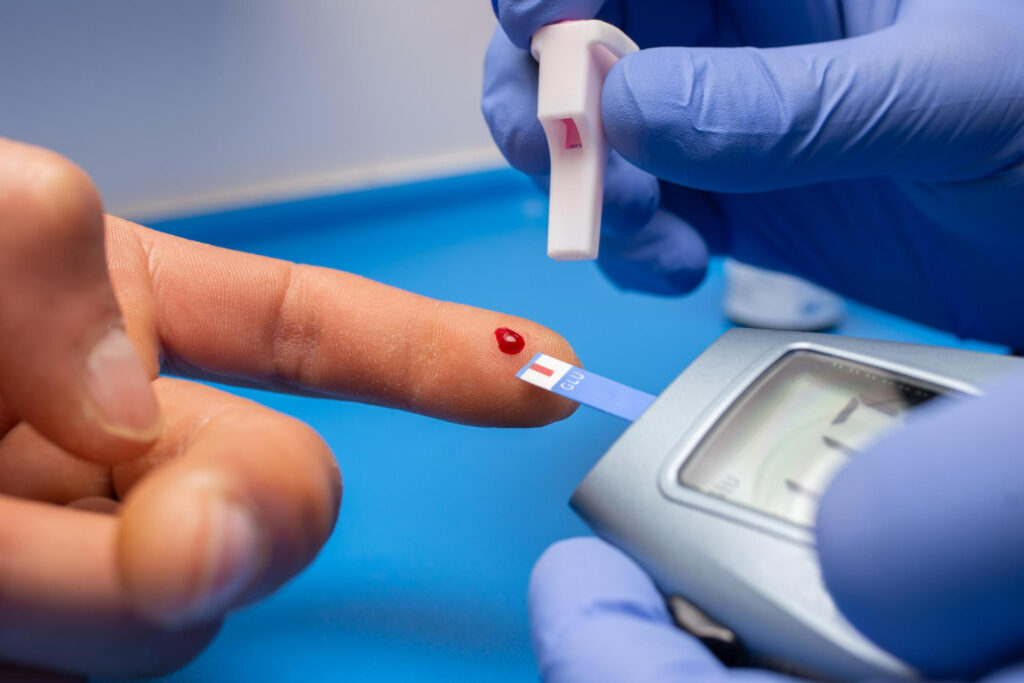The Link Between PCOS and Diabetes
Introduction – A Link Between PCOS and Diabetes
A disease that makes you feel tired all day, gets you ugly, hairy, overweight and doesn’t even let you have a peaceful pregnancy, has now been linked to the much-dreaded diabetes. Yes, you’ve guessed it right! Today, we are discussing the underrated link between PCOS and diabetes. Polycystic ovary syndrome (PCOS) is a fairly common hormonal disorder affecting women of reproductive age in this era; diabetes, on the other hand, is a chronic metabolic condition that often coexists with PCOS and poses significant health challenges. Understanding the link between PCOS and diabetes is crucial for early detection, better treatment outcomes, and improved overall health. In this article, we will explore the intricate relationship between PCOS and diabetes, shed light on their shared risk factors, delve into the underlying mechanisms, and discuss strategies to fight this dual battle.
How Does PCOS Cause Diabetes?
PCOS is generally known to result in Type 2 diabetes—-adult diabetes—where the body’s cells become resistant to insulin, resulting in high blood sugar levels. Persistent PCOS can also lead to gestational diabetes—an increase in blood sugar levels during pregnancy. The connection between the two is multifactorial and bi-directional. Let us understand why.
Here is a quick overview of the link between PCOS and diabetes:
Multiple ovarian cysts in PCOS interfere with the ovary’s ability to produce sex hormones. This may result in an excess of male hormones.
Testosterone is one such male hormone that causes the pancreas to overproduce insulin. High levels of insulin in the blood lead to the following:
● Insulin Resistance
Insulin resistance is a crucial feature of both PCOS and type 2 diabetes. Excess insulin in the blood causes body cells to become less responsive to it, resulting in high blood sugar levels. The pancreas responds by producing more insulin to make up for the resistance. Over time, the pancreas may struggle to maintain normal insulin levels, resulting in elevated blood sugar levels and, potentially, diabetes.
● Hyperinsulinemia
Hyperinsulinemia occurs as the body tries to overcome insulin resistance by producing more of it. However, elevated insulin levels can further exacerbate insulin resistance, creating a vicious cycle.
High insulin levels also cause the ovaries to produce more testosterone and less sex hormone- binding globulin (a protein that binds sex hormones), allowing for even higher levels of circulating male hormones.
● Obesity
Obesity is a shared risk factor for both PCOS and type 2 diabetes. The risk of insulin resistance and slow metabolism is increased by excess body weight, especially abdominal fat. Obesity can worsen insulin resistance and speed up the onset of diabetes in people with PCOS.
PCOS and Diabetes Symptoms
Have you had a PCOS history and are scared of developing diabetes? Well, look out for these signs and symptoms that suggest a link between PCOS and diabetes. Despite being distinct, PCOS and diabetes signs overlap in several indications and symptoms.
The following are some typical indicators and symptoms that might appear in both PCOS and Diabetes:
● Irregular periods
Your periods are irregular, with a cycle lasting over 35 days. The period cramps are painful, and the bleeding is erratic.
● Unexplained weight gain
Both PCOS and diabetes share the common symptoms of weight gain and struggle to reduce weight. It might be difficult to maintain a healthy weight due to insulin resistance, which is a major factor contributing to weight gain.
● Hirsutism
Hair growth, often known as hirsutism, is the growth of coarse, black hair. You might observe hair growth on their chest, chin, or face.
● Hair fail
Hair loss or thinning is common. Your receding hairline may resemble male-pattern baldness.
● Skin changes
Having acne on your back, chin, chest, or other parts of your face. In addition, skin discoloration may happen, particularly in crevices like the groin and armpits.
● Increased hunger and food cravings
Insulin resistance in PCOS can lead to higher insulin levels, which can stimulate appetite. In diabetes, the inability of cells to effectively use insulin can result in increased hunger as the body tries to compensate for the lack of energy.
● Fatigue
High insulin levels in PCOS can affect energy metabolism, while high blood sugar levels in diabetes can lead to fatigue due to inefficient use of glucose by cells.
● Increased thirst and frequent urination
When blood sugar levels are high, the kidneys work harder to filter and eliminate excess glucose, resulting in increased urine production and thirst.
If most of the symptoms on the checklist apply to you, it’s time to visit your gynecologist and diabetologist.
PCOS and Diabetes Treatment
PCOS is frustrating. Unfortunately, there is no cure for PCOS. Once acquired, it will take time to wean off, and lifestyle modification is the only key.
Here are a few things that you can do to disrupt the vicious link between PCOS and diabetes:
● Lifestyle Modifications
Adopting healthy lifestyle habits is a cornerstone of managing both PCOS and diabetes. This includes:
Healthy Diet
Cutting down on processed sugars and refined carbohydrates can help regulate blood sugar levels and promote weight management. Make whole grains, fruits, vegetables, lean proteins, and healthy fats your main focus.
Regular Physical Activity
Regular physical activity, such as brisk walking, strength training, or aerobic exercises, can enhance insulin sensitivity, encourage weight loss, and help regulate blood sugar levels. Aim for 150 minutes or more per week of moderate-intensity training.
Weight Management
For both PCOS and diabetes management, maintaining a healthy weight is essential. It will help improve insulin sensitivity, hormonal balance, and overall health outcomes.
Stress Management
Insulin resistance and hormonal imbalances can worsen under long-term stress. Implement stress-reduction strategies like mindfulness, meditation, yoga, or engaging in relaxing activities.
Say No to Smoking and Alcohol
The risk of complications related to PCOS and diabetes can be decreased by giving up smoking and consuming alcohol in moderation.
● Medications
Birth control pills and other hormonal contraceptives can help manage hormonal imbalances, control menstrual cycles, and lower the risk of endometrial cancer. Anti-androgen drugs (anti- male hormone pills) can also aid in reducing acne and excessive hair growth. Sometimes, women with PCOS may be given diabetes medications like metformin to improve insulin sensitivity and control their menstrual cycles.
● Regular Monitoring
Blood Sugar Levels
Monitoring helps ensure that blood sugar levels are within target ranges and allows for adjustments in medication, diet, or physical activity as necessary.
Hormone Levels
To evaluate the efficacy of treatment and track any hormonal imbalances, women with PCOS may need to have their hormone levels checked regularly.
Regular Medical Check-ups
Routine check-ups with the doctor are essential for managing both PCOS and diabetes.
Takeaway
The link between PCOS and diabetes is deep and complex. While PCOS increases the risk of developing diabetes, not all women with PCOS will develop the condition. Diet, exercise, and weight management are all lifestyle factors that significantly reduce the risk. Adopting a healthy lifestyle and consulting frequently with your gynecologist and diabetologist can help you manage PCOS, enhance insulin sensitivity, and lower your risk of getting diabetes.
FAQs
● Which comes first PCOS or diabetes?
PCOS typically precedes diabetes. Insulin resistance, a crucial component of both diseases, is frequently seen in PCOS and can eventually result in the onset of type 2 diabetes.
● How do you know if you have diabetes from PCOS?
If you have been diagnosed with PCOS and have not been actively working towards controlling it, then you may develop other symptoms such as extreme hunger, sweet cravings, frequent urination, and fatigue, suggesting that you may be developing diabetes.
● Is PCOS related to sugar?
Sugar does not cause diabetes directly, but can be a risk factor for developing diabetes in PCOS.








